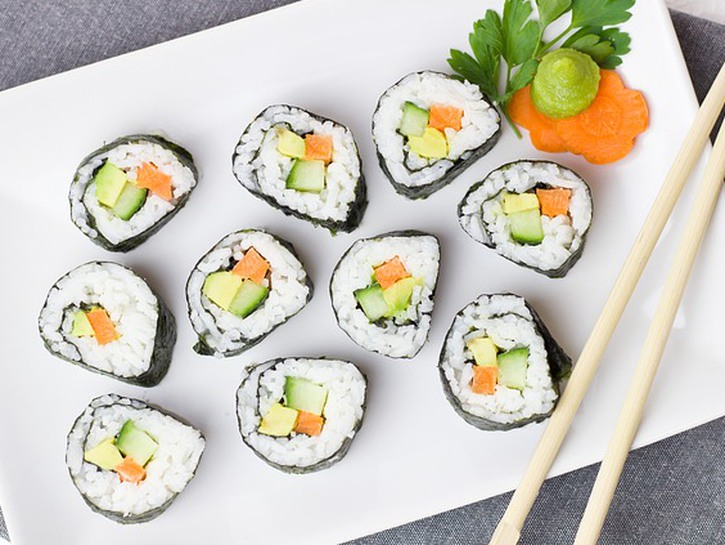Miso soup, tempura, sushi rolls, sashimi, wontons… the list goes on and on for all the delicious things we can get from our favorite sushi restaurant. It’s hard to keep track of all the colors and flavors, let alone what’s actually going into our cherished sushi rolls.
But, when all is said and done and we’ve licked the plates clean, it would behoove us to learn what we’re actually ingesting. If you’ve ever had California rolls then you may have noticed that the meat doesn’t quite taste like the crab you’re used to. Well, you’re onto something…
What Is Imitation Crab Meat?

You’ve more than likely had imitation crab meat once in your life, even if you weren’t aware of it. So, what is it?
Imitation crab is made from a kind of minced paste known as surimi. Manufacturers will add a few things like color and fillers in order to ensure that surimi accurately mimics the taste of crab.
‘What is surimi’ you ask? Well, it’s a kind of fish that’s actually made up of a bunch of different fish that have been ground together. Surimi actually translates into “ground meat” and can be flavored to imitate additional sea creatures like lobster and shrimp. Plus, it works well for manufacturers and consumers because it’s way cheaper than crab meat itself.
Imitation Crab Versus Real Crab
Okay, so, you’ve had California rolls before and scarcely noticed a difference in the taste. So, what gives?
It’s not that imitation crab gives off an entirely different taste, but you’ll be able to notice more of a sugary flavor. Imitation crab has more gluten and about the same level of salt as its real-life counterpart, so if you’re a crab stickler than you’ll be able to spot the difference between the two based on these alterations. Aside from that, though, the flavor and coloring that’s added to the imitation meat are enough to taste relatively similar to the real thing.

Nutrition Variations
Even though they may taste the same, there are some significant differences in nutrition between the two.
Protein: Real crab meat has way more protein than its imposter. 1 oz of imitation crab meat pretty much has no protein, whereas 1 oz of the real stuff will give you about 6 grams of protein.
Calories: The calories in these two are very similar. 1 oz of imitation and real crab meat will yield about 30 calories a piece.
Sugar: Perhaps the biggest difference between these two is the amount of sugar found in imitation crab meat. There is no sugar in real crab meat, but due to the flavoring and coloring processes that occur with surimi, imitation crab has nearly 2 grams of sugar per 1 oz.
Sodium: Sodium levels are also pretty similar between these two. 1 oz of imitation crab will yield approximately 150mg of sodium, whereas 1 oz of authentic crab meat will give you about 100 mg.
Health Concerns And Benefits
One of the biggest things to look out for when it comes to ingesting any kind of crab meat is the level of sodium. Just a few ounces of either kind of crab meat will contain a significant amount of sodium, which leads to greater risk of heart disease on account of increased blood pressure. You’ll want to watch out for how much you’re eating regardless of whether or not it’s authentic.
Though, there is some good news. Authentic crab meat is loaded with protein and riboflavin, which is crucial for your diet. Real crab meat also has lots of vitamins and nutrients that promote bone health and good eyesight.
The thing to note about imitation crab is that it’s not exactly packed with the same vitamins and nutrients as the real stuff. Imitation crab also isn’t gluten-free, which is something else you’ll need to look out for the next time you’re out to dinner.

Regardless of whether or not you’re loading up on the real or the imitation kind, crab meat is something that should be enjoyed in moderation. I’d be lying if I said I was going to refrain from stuffing my face with California rolls, but the above facts are things to keep in mind on your next sushi outing.
